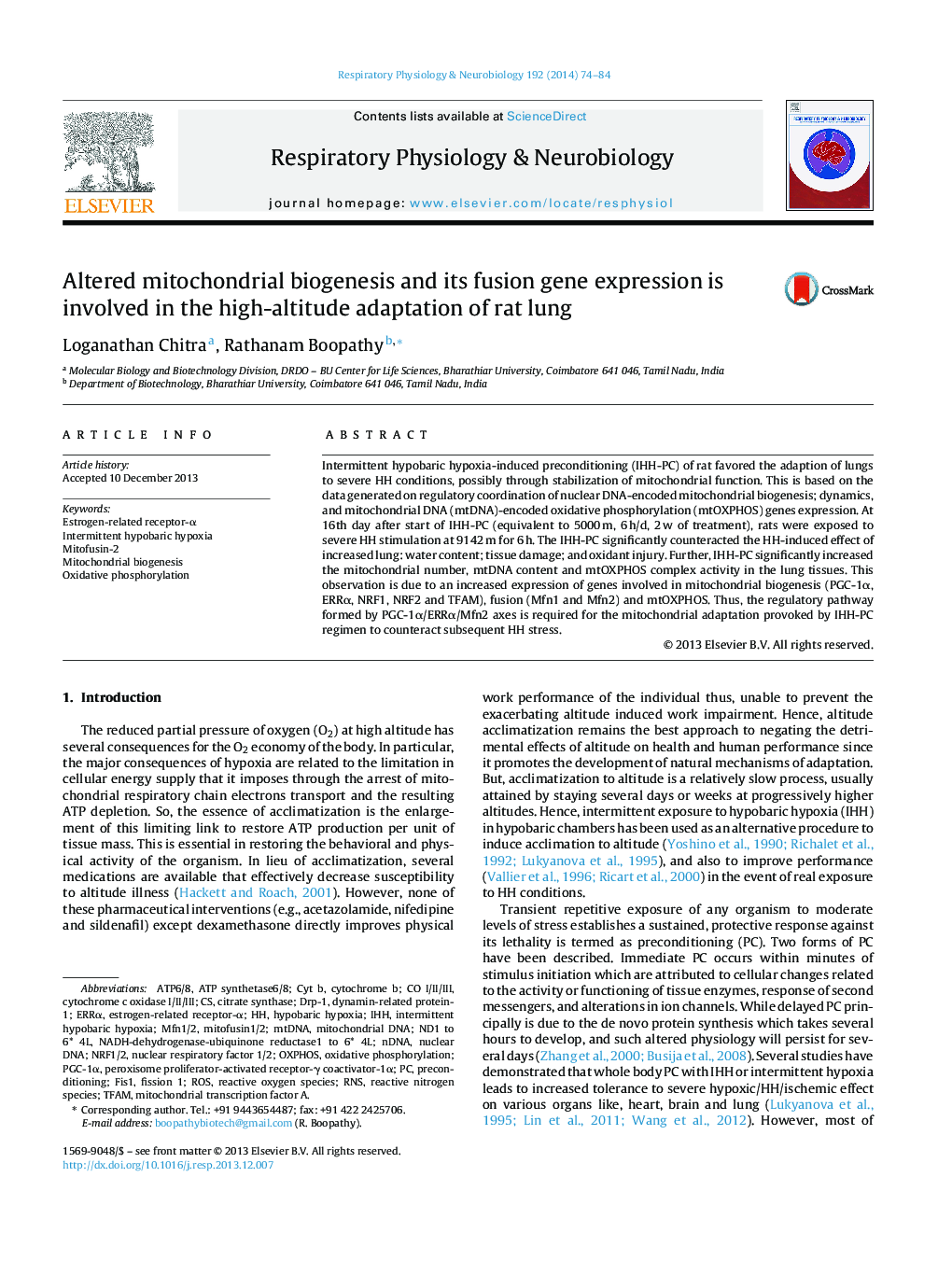| Article ID | Journal | Published Year | Pages | File Type |
|---|---|---|---|---|
| 2847043 | Respiratory Physiology & Neurobiology | 2014 | 11 Pages |
•IHH-PC regimen in rat stabilized the mitochondrial function of the lung tissue.•IHH-PC increased the mitochondrial number, mtDNA content and OXPHOS activity.•Expression of mitochondrial biogenesis/fusion/OXPHOS genes increased under IHH-PC.•PGC-1α/ERRα/Mfn2 axes is required for mitochondrial adaptation induced by IHH-PC.
Intermittent hypobaric hypoxia-induced preconditioning (IHH-PC) of rat favored the adaption of lungs to severe HH conditions, possibly through stabilization of mitochondrial function. This is based on the data generated on regulatory coordination of nuclear DNA-encoded mitochondrial biogenesis; dynamics, and mitochondrial DNA (mtDNA)-encoded oxidative phosphorylation (mtOXPHOS) genes expression. At 16th day after start of IHH-PC (equivalent to 5000 m, 6 h/d, 2 w of treatment), rats were exposed to severe HH stimulation at 9142 m for 6 h. The IHH-PC significantly counteracted the HH-induced effect of increased lung: water content; tissue damage; and oxidant injury. Further, IHH-PC significantly increased the mitochondrial number, mtDNA content and mtOXPHOS complex activity in the lung tissues. This observation is due to an increased expression of genes involved in mitochondrial biogenesis (PGC-1α, ERRα, NRF1, NRF2 and TFAM), fusion (Mfn1 and Mfn2) and mtOXPHOS. Thus, the regulatory pathway formed by PGC-1α/ERRα/Mfn2 axes is required for the mitochondrial adaptation provoked by IHH-PC regimen to counteract subsequent HH stress.
